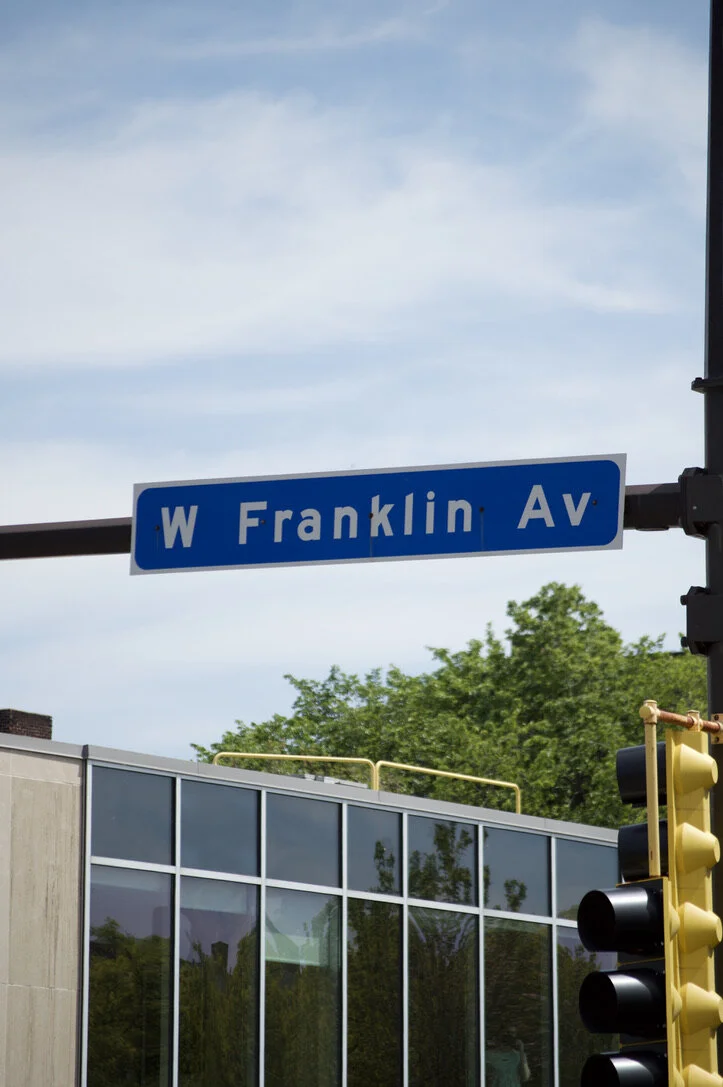Why Nobody Wants to Talk About Franklin Steele
There are names that are familiar to every Minnesotan - Sibley, Ramsey, Nicollet, Hennepin are just a few. Counties, parks, schools, libraries, avenues, and memorials in their honor dot our maps throughout the state. We may not remember every detail of their accomplishments, but we at least pretend to know they did something worth remembering.
Franklin Steele came to the Minnesota territory in the 1830s and was soon nicknamed “the Father of Minneapolis”, but have you heard of him? Pull up a chair and let me tell you why not.
In 1834, Steele arrived in St. Croix in search of lumber. Not long after, he relocated to Fort Snelling where (with the help of his brother-in-law Henry Sibley) he landed the job of sutler. Being a sutler was like being in charge of the general store, but since you were the only option you had a built in clientele and could charge whatever you wanted. The other benefit of the position was being close to center of the action.
Fort Snelling was the nexus of information and power in the early days of the territory. The commander was the first to know if there would be a new treaty or if new land was becoming available for settlers. It was illegal to claim or build on land outside of the fort reservation boundaries because that land still belonged to the Ojibwe and Dakota. But you couldn’t build inside the boundaries of the fort reservation either without getting permission from the commander. Hundreds of settlers had built illegal shacks and farms anyway, staying as close as they could to the protection of the military, but taking a risk by living on Native American land.
In 1838, commander Joseph Plympton was making plans to use this information about a new treaty to his own advantage. He remapped the fort’s boundaries and ordered soldiers to clear the land outside of the borders of any white settlers.
These exiles banded together and formed a new community that they called Pig’s Eye. You can read more about them here.
Why would Plympton want to force the settlers off of land he wasn’t in charge of? Because he wanted it for himself. Plympton knew that a new treaty would soon go into effect opening all of the land outside of the fort reservation for settlers and land speculators. He was making sure there was no one else on the land to compete for the claim. Plympton must have been so confident about his plans that he let it slip. On the fateful night that word got to the fort the land was open to settlement Franklin Steele beat him to it, building a cabin by moonlight on the west bank of the Mississippi river and claimed all the prime land for himself.
Taking possession Nicollet Island, Hennepin Island and hundreds of acres on the west bank, Steele mapped out a new city and called it St. Anthony. He harnessed the power of the falls and built the first commercial lumber mill at St. Anthony Falls. He also leased out land to several other mills. He partnered with John Stevens to build a rope-pull ferry across the river. He donated land to create the University of Minnesota and was elected to the Board of Regents. In 1855, Steele and Stevens built the first bridge across the Mississippi (which would become the Hennepin Avenue bridge) and connected Minneapolis with St. Anthony. The bridge was privately owned, so they could charge walkers three cents (five cents for a round trip); horses and mules fifteen cents each; carriages and wagons twenty-five cents.
Steele was soon expanding his land holdings and businesses on the Minneapolis side of the river as well. He bought 160 acres in 1856 and quickly built more mills and leased the land to other commercial operations. Still not satisfied, Steele set his eyes on the only nearby land that hadn’t been claimed by private ownership: Fort Snelling.
His first bid was rebuffed by the military because they deemed the fort still necessary for military operations. An election and a new administration later, along with some help from his brother-in-law turned Governor Henry Sibley, Steele was able to buy the fort at a price even lower than his first offer. He bought Fort Snelling and its surrounding 6,000 acres of land in 1857 for $90,000.
So far, this is the story of Franklin Steele that makes it into the history books. He was a shopkeeper who seized an opportunity and became a successful businessman and landowner. He bent the rules here and there, but his entrepreneurial spirit was inspiring. Steele county is named after him. Franklin Avenue is named after him. Franklin Steele Square was dedicated to him after he died. So why don’t we know about him? Well, buckle up, because this is where things take a turn.
Right after Steele took ownership of Fort Snelling the Financial Panic of 1857 swept across the country. Banks closed and land values plummeted. Debt collectors were soon knocking on Steele’s door and he started hiding his assets any way that he could. What came next traumatized the state of Minnesota, but saved Franklin Steele’s hide.
The Civil War was raging in the south, demanding more resources and Governor Ramsey had promised Minnesota troops. The military was suddenly in high demand, but they had just sold their fort. Steele “donated” the use of the fort back to the military in return for the sole contract to supply the military with food, hay for horses, and wood for heating and cooking. This contract brought $10,000 per month streaming into Steele’s pockets. In addition, the Dakota Uprising, or the Dakota War of 1862, sparked weeks of bloodshed and mayhem throughout Minnesota. As Sibley led troops out to quell the conflict, Steele was given a contract to supply his soldiers at a profit of $8,000 per month. More than 1,000 Dakota prisoners were brought to Fort Snelling and forced into an internment camp on Pike Island. Prisoners provided Steele more mouths to feed. War profits continued to pour into Steele’s accounts.
Steele had proven that he had an eye for identifying the natural resources around him and exploiting them for profit. Supplies, land, lumber, waterpower, bridges all made big profits. Soon, he would discover another resource to exploit: Scrip.
In 1830, the Treaty at Prairie du Chien included a clause that provided a large piece of land for the “mixed-blood”, Dakota that were half-white, to live on. About 320,000 acres were set aside for the Half Breed Tract west of Lake Pepin in southeast Minnesota. For decades white land speculators would try to find ways to buy the land, but it was protected by law. In 1854, then territorial representative Henry Rice passed legislation that would entitle each “mixed-blood” to 640 acres of their choosing anywhere in unsurveyed territory (land that hadn’t become territory or achieved statehood) in return for giving up their claim to land in the Half Breed Tract. Their ownership of the land would be represented by a piece of paper called “Scrip”.
This is where it gets complicated. Think of it like this: It was kind of like returning something to Target, but instead of cash you are given a gift certificate. It’s the same value, but it’s not cash. On top of that, you can’t spend the gift certificate at Target. You have to spend it at Walmart.
In theory, 640 acres is 640 acres. In reality, do the Dakota have the money or desire to uproot their families, travel west into unknown land, re-establish their lives and possibly come into conflict with other Native American tribes? No.
After the Dakota War in 1862, the Dakota prisoners at Fort Snelling were out of food, dying of disease, starvation and cold, and were left with nothing but their scrip. Steele saw his opportunity and began buying the prisoners’ scrip for pennies on the dollar and in some cases in exchange for freedom from the internment camp. He then used the scrip to buy thousands of acres throughout Minnesota territory that he knew would soon build railroads, bridges, or become townsites. The shady deals were facilitated by the Washburn Land Company, which hid the identities of its partners - Steele, Rice, and the government representative in charge of distributing the scrip, General James Shields.
The scrip trade was so profitable that they began hiring scouts to scour the country to find any mixed-blood outlaws who might still have scrip. The scouts would bring in the Dakota fugitives to receive the military reward and also receive a bonus from the land speculators. The government wanted justice, but the Land Company wanted scrip.
In 1863, Steele and his partners sought richer lands out west. They found it in the Nevada territory when a giant lode of silver was discovered and in the forests around Lake Tahoe. They used their scrip to buy thousands of acres of suddenly very valuable land and sold it to the local mining and timber companies. The growing operation was so profitable that U.S. federal attorney for Minnesota, George A. Nourse, resigned his position and joined the operation to assist with the legal wrangling. Former Minnesota Supreme Court Justice Charles E. Flandrau also joined as bagman, traveling back and forth trading papers for cash.
The Gold Rush took the Land Company even further west as they used scrip to buy up thousands of acres in San Francisco and in the redwood forests. By 1869, Steele’s western operations had cleared close to $300,000 (about $4,795,700 today).
In 1872, Steele and his partners used some of their profits to form the Northwestern National Bank of Minneapolis, capitalized at $200,000 (about $3.5 million today). Northwestern National became Northwest Bancorporation (Banco) in 1929, which became Norwest in 1983, which merged with Wells Fargo in 1998.
In the meantime, the surviving Dakota were forced out of Minnesota and onto reservations in North Dakota, South Dakota and Nebraska. Hundreds died of illness and starvation. The bank that became the financial backbone of the northwestern United States can trace its initial capital to profiting off of the Civil War and the Native American inmates of the Fort Snelling prison camp.
That’s why nobody wants to talk about Franklin Steele.














